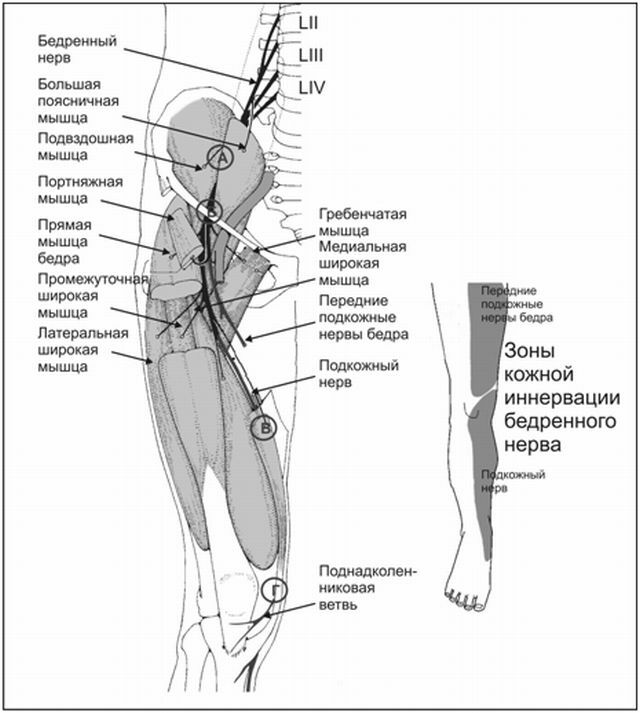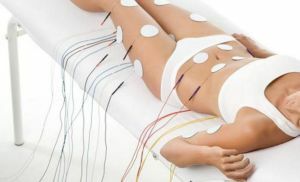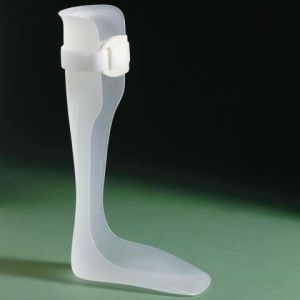 The defeat of the femoral nerve most often occurs in the area of its placement in the retroperitoneal space, in the place where it binds to the inguinal bandage.
The defeat of the femoral nerve most often occurs in the area of its placement in the retroperitoneal space, in the place where it binds to the inguinal bandage.
Diseases of the femoral nerve( neuritis, neuralgia and others) are characterized by muscle weakness in the field of innervation, their numbness and pronounced pain syndrome.
As a rule, most often a similar problem occurs in women due to their physiological characteristics after 40-50 years, as with age the femoral muscles wear out, which can lead to nerve damage.
Contents
- Anatomical and physiological reference
- Neuropathy - a dangerous pinching of the nerve
- Causes and symptoms
- Diagnosis and treatment
- Neuritis - latent danger to the femoral nerve
- Causes and symptoms
- Diagnosis and treatment
- Neuralgia is defeated and irritated
- Reasons and clinic
- Diagnosis and therapy
- Consequences and preventive measures
Anatomical and physiological reference
By nature femoral genital nerve is formed from a variety of fibers and nervespinal cord. Starting at the highest level, it is located near the lumbar muscle, and then passes under its outer edge. Most of the nerve endings are in a small cavity between the lumbar muscle and the iliac muscle.
When leaving the pelvic cavity, the nerve leaves this medium and passes through the bone-fibrous tunnel, which is formed in the groin area.
Under the ligament the nerve passes through the muscle lacuna. Upon exiting this area, the nerve gets underneath another sheet that covers several iliac regions, in this place it is in the region of the femoral triangle, in the inguinal bandage and the tailor's outside, and inside - the long adductor muscle.

According to the specialized medical literature, on the side of the femoral nerve is a triangle of the same name, which fixes the thighs with a deep leaf and smoothly passes into the iliac fascia.
And then the femoral artery departs from the nerve itself, in this place the nerve can be squeezed by the formed hematoma with a stroke or bruise. A little higher from the inguinal bandage and the nerve are the ileal nerve branches and small lumbar muscles.
These muscles round the hip joint and form a kind of safety buffer.
The femoral nerve is quite vulnerable and prone to many diseases - neuralgia, neuritis, neuropathy and others.
Topographic anatomy of the femoral nerve:
Neuropathy is a dangerous pinching of the nerve
Femoral nerve neuropathy is formed at the lumbar level and can often be caused by its pinching due to muscle spasm or hemorrhage, which can be caused by internal hemorrhage, overloads and trauma.
Causes and symptoms
In addition, neuropathy can be caused by the following abnormalities:
- retroperitoneal hematoma;
- tumors;
- hemophilia;
- thrombocytopathy.
- muscle injury during the performance of intense sports exercises( stretching and the like);
- formation of hematomas after trauma;
- intoxication of the body.
Diseases in the femoral nerve are also quite common among professional athletes. Caused this may be a muscle overexertion, which leads to pinching of the nerve. Instability of the knee joint can find its echo in this problem.
Diagnosis and treatment
Nerve damage, as a rule, is hidden( that is, the problem does not appear externally), but in case of complication in  patients, pain syndrome and swelling in the pink-violet color lesion zone are observed.
patients, pain syndrome and swelling in the pink-violet color lesion zone are observed.
Neuropathy is an inflammatory process of nerve endings, which is characterized by damage to the myelin sheath, which subsequently leads to impairment of the conduction of the nerve impulse. Diagnosis of the disease during a primary examination.
Treatment passes in stages and consists of:
- receiving non-hormonal anti-inflammatory drugs;
- reception of vitamins;
- curative gymnastics and massage.
Neuritis - latent danger to the femoral nerve
Neuritis is an inflammatory process that forms in the peripheral nerve. There is symptomatology throughout the nerve, a change in the sensitivity of the affected area and muscle weakness.
Causes and symptoms
Neuritis of the femoral nerve is a pathological lesion of the hip nerves, which can be caused by a number of different causes.
For example, this condition can be caused by pinching of the fiber or the formation of a hematoma due to trauma. Neuritis can also manifest itself as a postoperative syndrome. The disease is characterized by pain and discomfort in the hip and knee area.
Symptoms( except for the aforementioned):
- inflammatory processes;
- pinched fiber due to trauma or hernia formation;
- infringement of activity of a limb;
- swelling and swelling of pink-violet in the area of damage to the fiber.
The disease is often manifested when trying to stand upright, sit down, jump. .. Gradually from temporary pain develops into a chronic one.
Diagnosis and treatment
 Diagnosis of the disease is carried out using a variety of functional tests that determine the location and extent of damage.
Diagnosis of the disease is carried out using a variety of functional tests that determine the location and extent of damage.
Treatment in this situation is quite standard methods( taking painkillers and anti-inflammatory drugs, massage, exercise therapy and therapeutic gymnastics).
Also after the application of diagnostic measures, the neurologist develops a comprehensive therapeutic therapy, which will be aimed not only at masking discomfort, but also at removing the causes of this condition:
- taking anti-inflammatory and analgesic drugs;
- therapeutic gymnastics, massage and physiotherapy;
- electrotherapy with the help of a small current flowing through the body( this type of treatment is called impulse current);
- from non-traditional methods of treatment should be allocated reflexotherapy.
Neuralgia is defeated and irritated.
Neuralgia is a pathological disease of the peripheral femoral nerve, which is characterized by sharp and burning pain.
If, in most cases, a violation of the functions of the fiber carries within it its damage, then in the case of neuralgia this condition causes irritation of the nerve endings in one area or another.
Reasons and clinic
Neuralgia of the femoral nerve is a related disease with intervertebral hernia, which can be caused by the fact that the hernia, gradually growing  , presses on the nerve endings, because of this there is a pinch of the fiber.
, presses on the nerve endings, because of this there is a pinch of the fiber.
Pathology can be manifested by various symptoms:
- discomfort and discomfort in the hip;
- increased pain syndrome;
- burning sensation;
- change in body temperature.
In general, with regard to the defeat of the femoral nerve one or another disease, it should be noted its gradual development and frequent pains not only in the thigh, but also in the groin area.
Diagnosis and therapy
Diagnosis of the disease is handled by a neurologist who performs a primary examination of the patient and, depending on his health, a range of additional diagnostic measures is prescribed. For example, magnetic resonance imaging of the entire vertebral part is necessary in order to find out whether the jamming of nerve endings has occurred.
With the help of computed tomography of the retroperitoneal region, one can accurately assess the clinical picture and severity of the disease.
Regarding treatment, in this case the main task is not only to hide discomfort, but also to remove the cause of irritation of nerve endings. For this purpose, a specially developed two-stage treatment regimen is used, the essence of which is that taking Neurodiclovitis removes not only inflammation, but also has an anesthetic effect.
Also necessary:
- reception of vitamin-containing drugs;
- taking medications to improve blood circulation in the body;
- complex of exercise procedures.
Consequences and preventive measures
 Only at first glance it may seem that there is nothing terrible in the defeat of the femoral nerve, because apart from discomfort, such a problem does not initially threaten.
Only at first glance it may seem that there is nothing terrible in the defeat of the femoral nerve, because apart from discomfort, such a problem does not initially threaten.
But, everything is not as rosy as many people think. In fact, only at first, a malfunctioning of the fiber is a practically harmless disease. Over time, the pain and degree of damage increase, which in the following can lead to a complete loss of sensitivity of the affected area. That is, the numbness of the limb.
To prevent such diseases it is necessary to resort to the following preventive measures:
- it is necessary to adhere to the correct nutrition, which will be saturated with products containing protein, but at the same time the diet should be balanced;
- if you are an athlete, before doing sports you need to make an elementary stretch, which will prevent pinching of the nerve;
- the best prevention is a timely call to the doctor.



